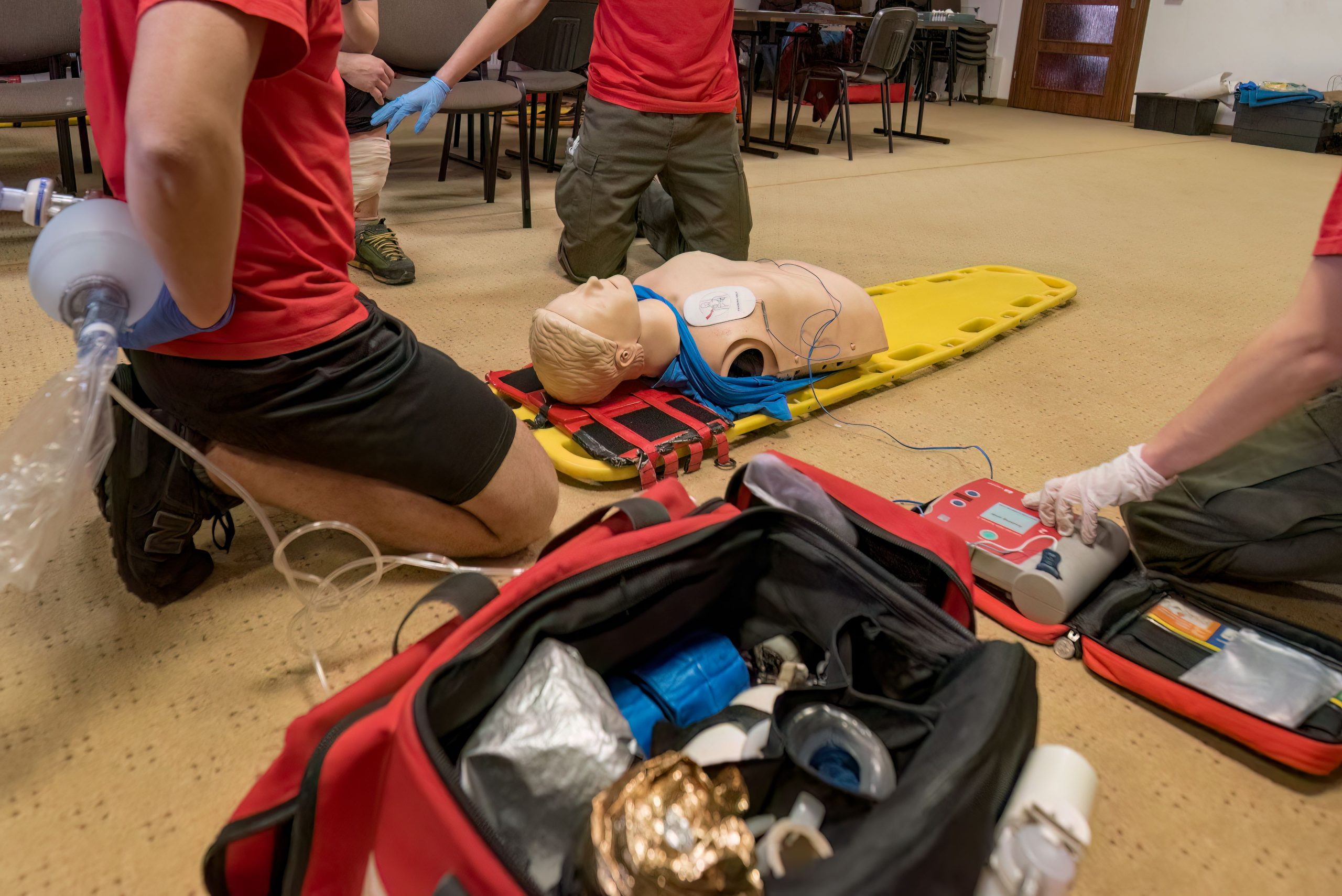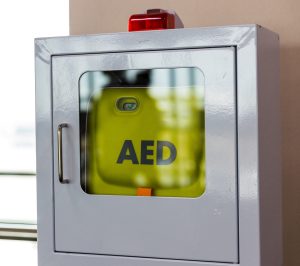
Menu
Close
If you typed “philips aed,” you likely want a defibrillator that’s easy to use, proven in emergencies, and simple to maintain—without turning your safety program into a full-time job. This guide breaks down four innovations that matter most for Canadian schools, offices, gyms, and light-industrial sites. It also links to trusted sources and gives you a clear next step with CPR Depot Canada.
Why this matters: Out-of-hospital cardiac arrest can strike anyone. Using an AED alongside CPR can double survival compared with CPR alone. Public access programs work best when the device is simple, the training is practical, and upkeep is easy to follow.
Philips HeartStart devices have a reputation for approachable design: step-by-step voice coaching, a helpful metronome, and pads that guide placement with on-device graphics. That kind of human-centred cueing is powerful when stress spikes. The gear is built so a bystander can act fast—even if they haven’t practised recently.
Need to brush up on the CPR beat? Global News popularized the “Stayin’ Alive” rhythm—about 100–120 compressions per minute—so your team has an easy tempo anchor. Share this link in your safety briefings: “Stayin’ Alive: the facts on CPR”.
What it is: Life Guidance is Philips’ adaptive coaching: clear voice prompts, icons, and a tone that match your pace. Turn the unit on, follow the prompts, place pads as shown, and the device walks you through rhythm checks, stand-clear cues, and CPR timing. A metronome keeps compressions on beat.
Why it helps: In a crisis, even trained people hesitate. Step-by-step coaching reduces errors and keeps you moving. The device doesn’t overwhelm you with options; it gives one action at a time, in plain language. Public awareness campaigns and training tools that reinforce a simple rhythm also boost confidence to start CPR sooner.
What it is: The HeartStart algorithm analyzes the patient’s heart rhythm and advises a shock only when indicated, then coaches you to resume compressions right away. Quick analysis means less downtime and faster treatment.
Why speed and accuracy matter: Survival falls quickly without CPR and timely defibrillation; the goal is rapid shock when appropriate with minimal compression pauses. Guidelines emphasize strong, continuous compressions and shorter interruptions—an AED that accelerates decisions while limiting pauses supports that goal.

If you’re choosing between OnSite and FRx models, start a short call with a specialist via CPR Depot Canada to match features to your environment (noise level, child/infant needs, and responder experience).
What it is: Modern CPR equipment—feedback-enabled manikins and training AEDs—reports compression rate, depth, and recoil so learners can correct technique on the spot. Philips’ training units mirror real prompts without delivering a shock, creating realistic, low-risk practice.
Why it works: The American Heart Association highlights real-time audiovisual feedback as a way to maintain CPR quality during practice and care. When people see a number or hear a cue, they keep compressions within target ranges more consistently. Better compressions, fewer pauses.
Evidence snapshot: Research that underpins the AHA recommendations shows higher adherence to depth and rate targets when feedback is present, and stresses maintaining a strong compression fraction (more time compressing, fewer stops). That directly supports outcomes when paired with early AED use.
Practical ways to use it:
Ready to kit your classroom or workplace program? The team at CPR Depot Canada can recommend durable manikins, trainer AEDs, masks, gloves, and shears that fit your budget and certification needs.
What it is: Philips HeartStart AEDs run automatic self-tests and display a readiness indicator. When something needs attention, the device chirps and shows a warning. Consumables have clear timelines: pads expire and batteries age on standby. Following those dates—and logging quick checks—keeps programs reliable.
Typical timelines:
Why this matters: A surprising number of public AEDs fail checks due to expired pads or drained batteries. The fix is simple: monthly visual checks + calendar reminders for expiry dates. Keep a small log card inside the cabinet or use a digital reminder system for multiple sites. Replacement parts and cabinets are available via CPR Depot Canada.
If you prefer hands-on guidance, contact us to set a replacement schedule and reorder plan that fits your sites.
Choosing an AED, mapping placements, and picking training tools can feel complex the first time. You don’t have to figure it out alone.
Good questions to ask CPR Depot Canada:

Start at cpr-depot.ca or Contact us and we’ll walk you through options and timelines.
How is a Philips AED different for first-time users?
The Life Guidance system gives simple, adaptive voice prompts with icons and a metronome, so even a new user can follow along under stress.
Do I still need to perform CPR if an AED is on site?
Yes. Start compressions immediately, attach the AED as soon as possible, and continue compressions between analyses as coached. CPR plus AED use improves survival vs. CPR alone.
How often should pads and batteries be replaced?
Pads often expire in 18–24 months; the OnSite/FRx battery typically provides about 4 years of standby once installed. Always follow your unit labels and the readiness indicator.
Is special training required to use an AED in Canada?
AEDs are designed for the public. Training is strongly encouraged because it boosts confidence and CPR quality, but the device itself guides you step by step.
What compression rhythm should I aim for?
Target 100–120 compressions per minute. “Stayin’ Alive” is a widely used cue to keep time. Share the Global News explainer in staff refreshers.